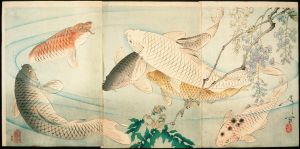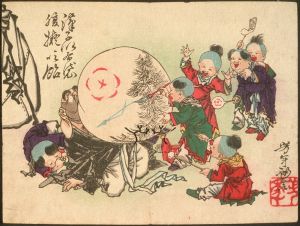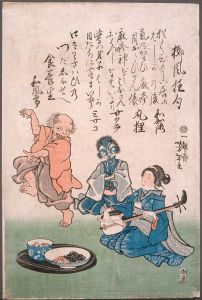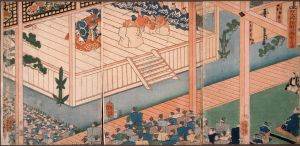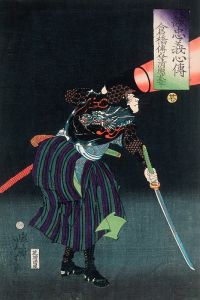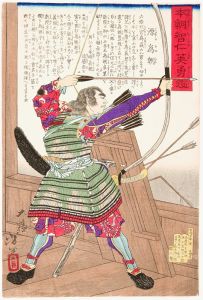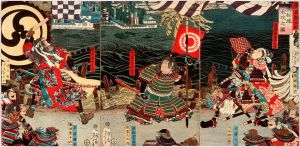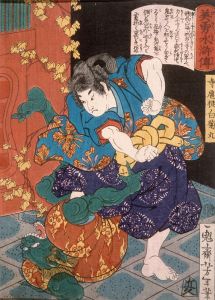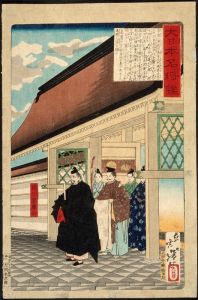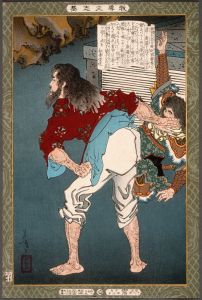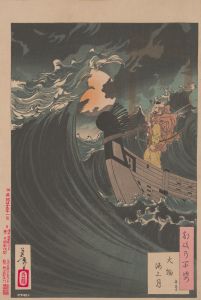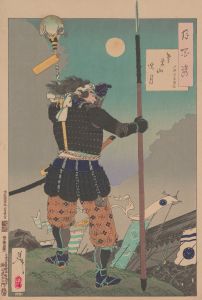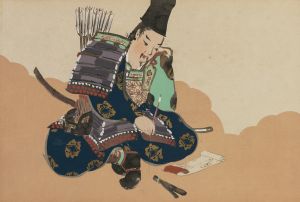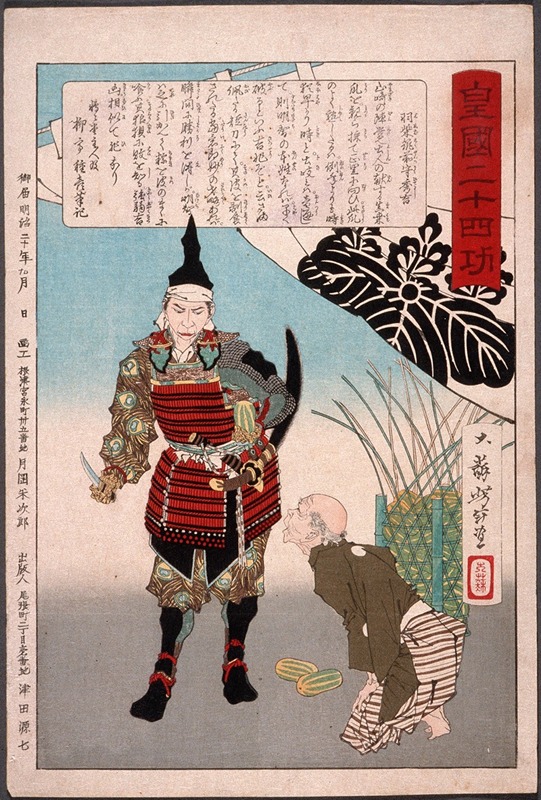
Hashiba Chikuzen no Kami Hideyoshi Cutting a Melon
A hand-painted replica of Tsukioka Yoshitoshi’s masterpiece Hashiba Chikuzen no Kami Hideyoshi Cutting a Melon, meticulously crafted by professional artists to capture the true essence of the original. Each piece is created with museum-quality canvas and rare mineral pigments, carefully painted by experienced artists with delicate brushstrokes and rich, layered colors to perfectly recreate the texture of the original artwork. Unlike machine-printed reproductions, this hand-painted version brings the painting to life, infused with the artist’s emotions and skill in every stroke. Whether for personal collection or home decoration, it instantly elevates the artistic atmosphere of any space.
Tsukioka Yoshitoshi (1839–1892) was a prominent Japanese ukiyo-e artist, known for his innovative and dramatic woodblock prints. One of his works, Hashiba Chikuzen no Kami Hideyoshi Cutting a Melon, is a striking example of his storytelling through art. The print depicts a historical or legendary scene involving Toyotomi Hideyoshi (1537–1598), one of Japan's most famous daimyo and a unifier of the country during the Sengoku period.
The title of the artwork refers to Hideyoshi by one of his formal titles, "Chikuzen no Kami," which he held during his rise to power. The act of "cutting a melon" in the image may symbolize division or strategy, as Hideyoshi was known for his cunning and resourceful leadership. However, the specific historical or symbolic context of the scene is not definitively documented, and interpretations may vary.
Yoshitoshi's style in this piece reflects his mastery of dynamic composition and expressive detail, hallmarks of his later works. The print is part of his broader exploration of historical and legendary figures, a common theme in ukiyo-e art. Yoshitoshi often infused his works with dramatic tension and vivid imagery, capturing the imagination of his audience.
As with many of Yoshitoshi's prints, Hashiba Chikuzen no Kami Hideyoshi Cutting a Melon combines historical reference with artistic license, making it both a visual and cultural artifact of the late Edo and early Meiji periods. The exact date of the print's creation is not specified, but it likely falls within Yoshitoshi's active years as an artist.
Further details about the specific narrative or context of this artwork are not well-documented in historical records. The print remains a testament to Yoshitoshi's skill in blending history, legend, and artistic expression.





